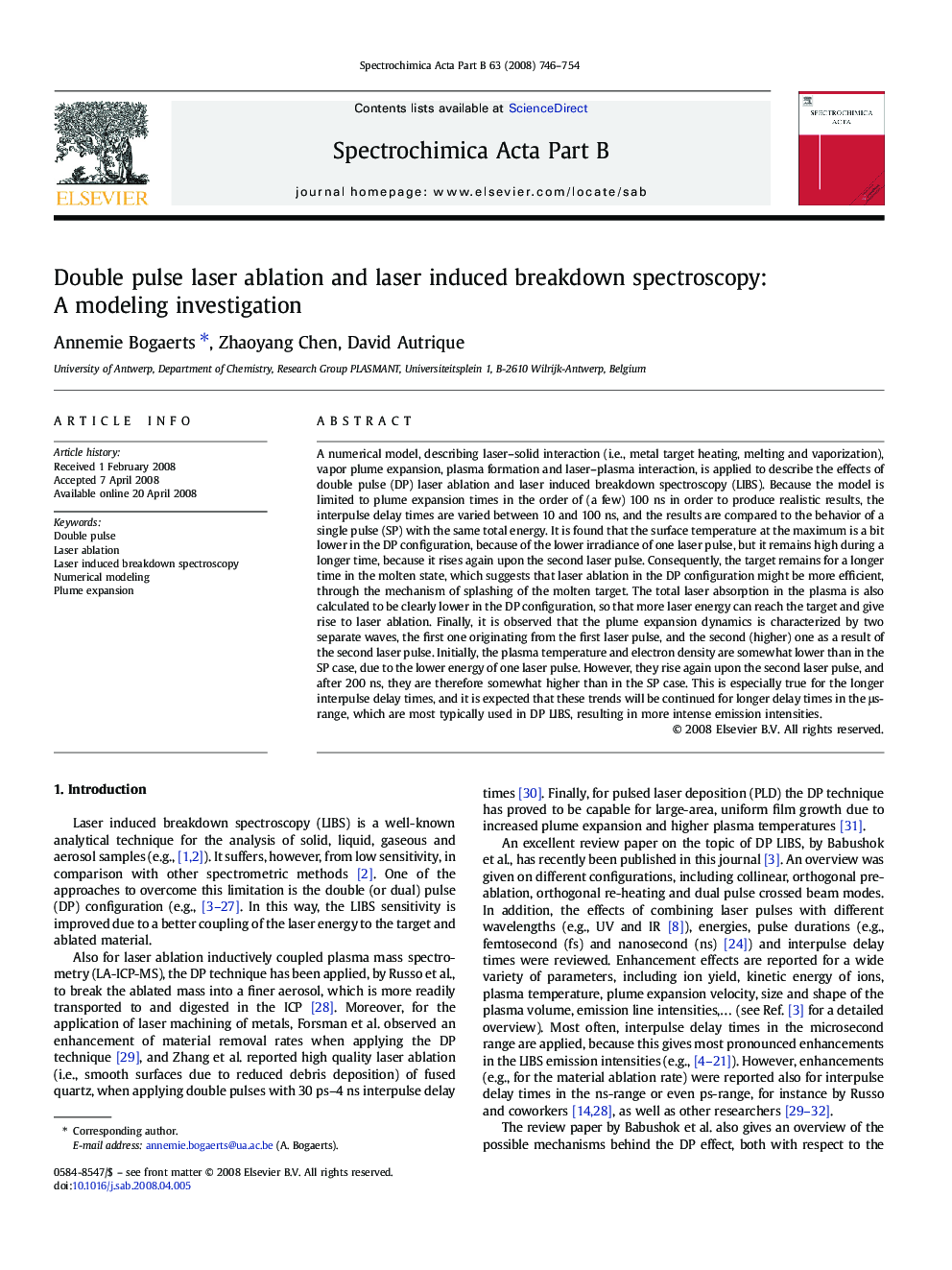| کد مقاله | کد نشریه | سال انتشار | مقاله انگلیسی | نسخه تمام متن |
|---|---|---|---|---|
| 1241064 | 969162 | 2008 | 9 صفحه PDF | دانلود رایگان |

A numerical model, describing laser–solid interaction (i.e., metal target heating, melting and vaporization), vapor plume expansion, plasma formation and laser–plasma interaction, is applied to describe the effects of double pulse (DP) laser ablation and laser induced breakdown spectroscopy (LIBS). Because the model is limited to plume expansion times in the order of (a few) 100 ns in order to produce realistic results, the interpulse delay times are varied between 10 and 100 ns, and the results are compared to the behavior of a single pulse (SP) with the same total energy. It is found that the surface temperature at the maximum is a bit lower in the DP configuration, because of the lower irradiance of one laser pulse, but it remains high during a longer time, because it rises again upon the second laser pulse. Consequently, the target remains for a longer time in the molten state, which suggests that laser ablation in the DP configuration might be more efficient, through the mechanism of splashing of the molten target. The total laser absorption in the plasma is also calculated to be clearly lower in the DP configuration, so that more laser energy can reach the target and give rise to laser ablation. Finally, it is observed that the plume expansion dynamics is characterized by two separate waves, the first one originating from the first laser pulse, and the second (higher) one as a result of the second laser pulse. Initially, the plasma temperature and electron density are somewhat lower than in the SP case, due to the lower energy of one laser pulse. However, they rise again upon the second laser pulse, and after 200 ns, they are therefore somewhat higher than in the SP case. This is especially true for the longer interpulse delay times, and it is expected that these trends will be continued for longer delay times in the μs-range, which are most typically used in DP LIBS, resulting in more intense emission intensities.
Journal: Spectrochimica Acta Part B: Atomic Spectroscopy - Volume 63, Issue 7, July 2008, Pages 746–754